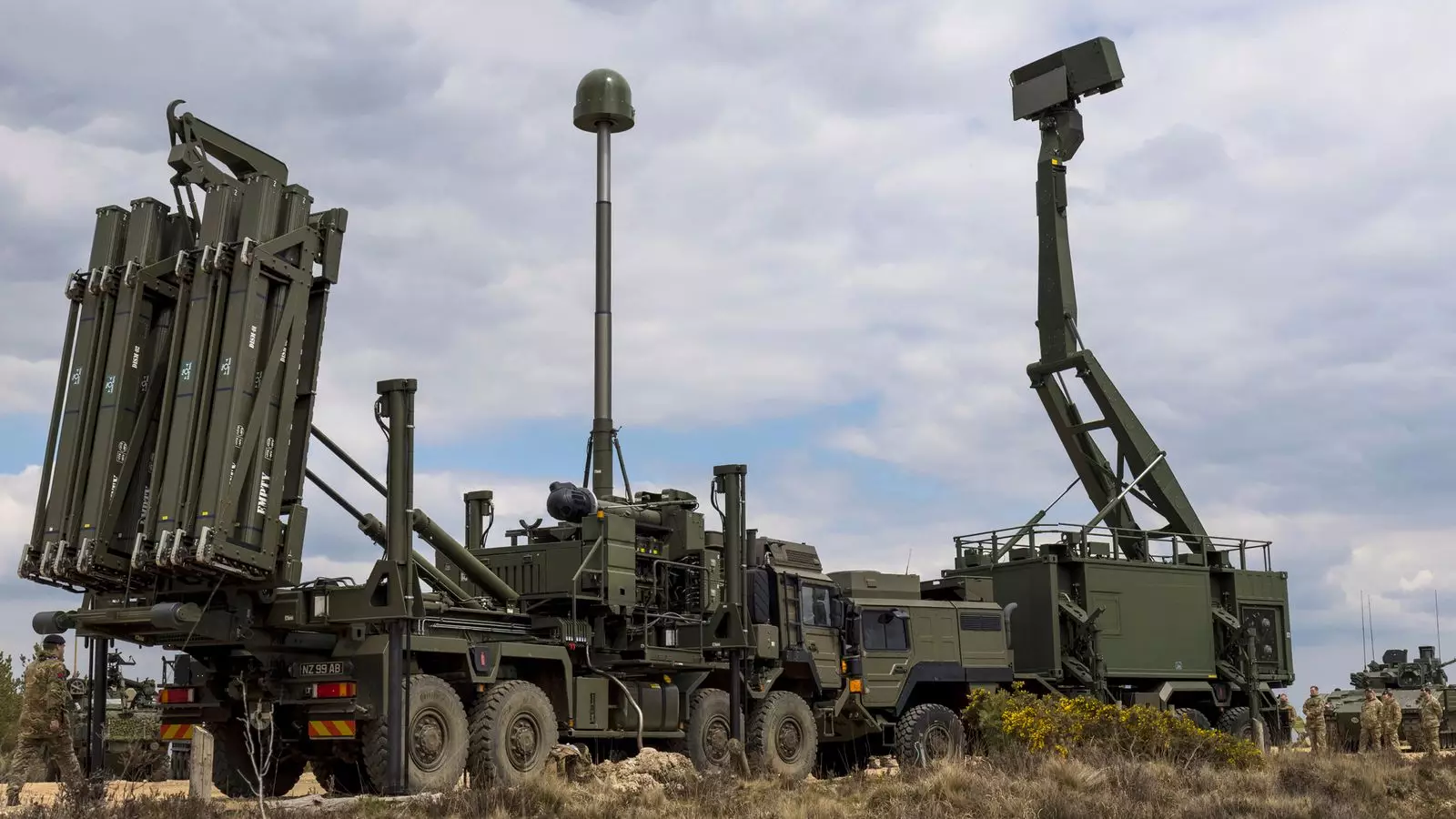The British government’s recent announcement to invest £118 million in new air defense missile systems appears, on the surface, to be a step forward in protecting the UK’s interests. However, this move reveals a troubling complacency that underestimates the rapidly evolving threats facing the nation today. While these systems, notably the Sky Sabre and Land Ceptor missiles, promise enhanced point-defense capabilities, they are fundamentally insufficient against the type of modern missile threats we now encounter. The reliance on legacy platforms, replacing Cold War-era systems only marginally better, indicates a defensive posture still rooted in outdated assumptions about warfare. It is high time the UK reassesses these tactics—because relying on surface-to-air missiles designed chiefly for tactical conflicts does not address the broader, more complex challenge of missile proliferation and advanced weaponry that could entirely bypass existing defenses.
Shifting Threat Landscape and the Illusion of Security
The decision to upgrade air defense comes at a moment of stark geopolitical volatility—conflicts in Ukraine, escalations in the Middle East, and the ominous rise of hypersonic missile technology. Yet, the UK’s current investments reflect a perilous underestimation of these threats. The Land Ceptor missiles, while effective within a limited radius, are fundamentally incapable of countering ballistic or hypersonic missiles—those weapons that can evade traditional radar systems and supersonic interceptors. Britain’s defense architecture, which historically depended on a layered defense strategy including the Sea Viper missile on naval assets, is critically incomplete on land. The absence of a credible missile shield comparable to systems like the U.S. THAAD or Israeli Iron Dome signifies a national security gap that will only become more dangerous over time.
Historical Amnesia and Strategic Short-sightedness
One of the most disconcerting aspects of the UK’s current approach is its historical amnesia. Cold War defenses like the Bloodhound missile, once scattered around the UK, provided a more comprehensive shield than today’s fragile layered system. Since then, successive governments have allowed these capabilities to atrophy—believing that the collapse of the Soviet Union rendered missile threats irrelevant. This complacency is evident in the recent procurement of Land Ceptor systems, which merely serve as tactical stopgaps rather than a coherent, strategic shield. The focus on expeditionary warfare, often involving less capable adversaries, lulled policymakers into complacency. Now, they face the unpleasant reality that modern adversaries wield missile technology capable of striking deep into national territory, rendering current defenses increasingly obsolete.
Overreliance on Allies and the Need for Self-Reliance
While it’s true that European allies contribute layered defenses, reliance on external partners for missile defense is a dangerous gamble. Enemies are developing offensive capabilities faster than allies can keep pace, and geopolitical tensions threaten to diminish cooperation just when it’s needed most. The UK’s diminished missile defense capacity leaves it vulnerable to emerging threats, especially if hostile nations decide to escalate their missile programs or develop hypersonic weapons that outpace existing detection and interception technologies. The government’s focus on “incremental upgrades” fails to address the fundamental need for a comprehensive, autonomous missile shield—one that can protect critical infrastructure, government facilities, and civilian populations without depending solely on the goodwill or operational readiness of allies.
The Urgency of a Paradigm Shift
Moving forward, UK defense strategists should acknowledge that the current approach—patching holes with incremental missile systems—is a flawed and ultimately dangerous strategy. The rise of hypersonic missiles, ballistic threats, and the proliferation of drones demands a new paradigm—one that integrates advanced detection, layered missile defenses, and technological innovation. Without such a shift, the UK’s national security remains dangerously vulnerable. Simply buying more missile systems, especially ones narrowly focused on specific threats, is insufficient. The real challenge is developing a holistic shield that can adapt to and neutralize the most advanced weapons of today—and tomorrow. Given the pace of technological progress, U.K. policymakers must abandon outdated assumptions and embrace strategic foresight—otherwise, the cost will be far greater than the price of a few missile systems.


Leave a Reply